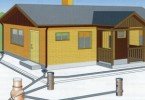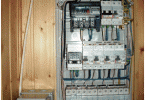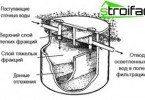Outdoor sewage
In order for the pastime in the city to be as comfortable as possible and leave only pleasant impressions, during construction it is necessary to take care of the availability of amenities, without which it is quite difficult to imagine the life of a modern person. Drinking water supply networks, heating system and outdoor sewage – tasks that require a primary solution when designing a house in the lap of nature.
Content
- External sewage: general information
- Pipes for outdoor sewage
- Cast iron pipes – obsolete equipment
- Priorities for Plastic Piping
External sewage: general information
The sewer system of a country cottage is structurally subdivided into internal and external. The term “external sewage” refers to the collector network from the release of the building to the discharge of clean water. In other words, the sewage system of the external (external) type is a sewage treatment system (septic tanks or local treatment facilities) or a highway laid in the centralized network of the village collector.
Components and purpose of external sewage
External sewage networks consist of several components: local treatment facilities, wells, pipelines, each of which is crucial in organizing the coordinated operation of the system as a whole.
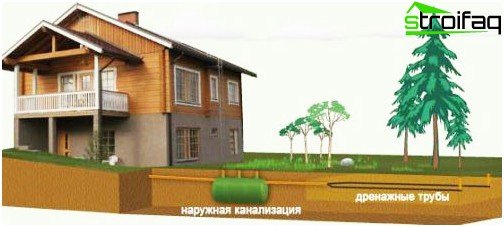
External sewage of a country house
External sewage has an important function – it carries out the transportation of wastewater outside the village or to treatment facilities designed for disinfection and wastewater treatment. Cleaning should reach such a level that, when the treated liquid is discharged into the body of water, its natural state is not disturbed..
Pipes for outdoor sewage
External water supply and sewage networks present certain requirements for pipes, and more precisely, for pipe material. Pipes must be reliable, lightweight, highly resistant to various external attacks..
Cast iron pipes – obsolete equipment
Previously, pipes were mainly made of cast iron, but today this material is losing ground, giving way to polyethylene, polypropylene and polyvinyl chloride (PVC).
This is explained by the high standards of compliance for sewerage systems, which simply must be immune to corrosion, chemicals, temperature extremes.
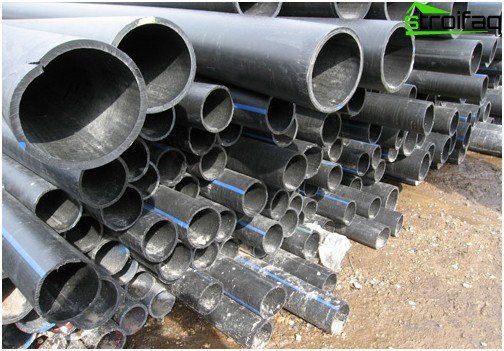
Cast iron pipes – heavy obsolete equipment subject to corrosion
Equally important are the costs of transportation, installation and maintenance. Cast-iron pipes lose in all respects: they are heavy, require constant monitoring of after-sales services, and are subject to corrosion. That is why the external water supply and sewerage networks began to be made of other materials..
Priorities for Plastic Piping
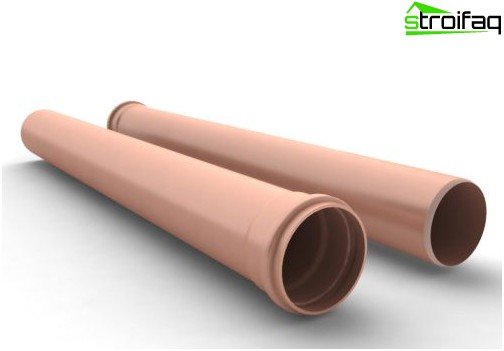
The use of plastic pipes – saving time and money during transportation, construction, operation
The leaders in popularity are PVC pipes, because they have advantages that do not leave competitors any chance. Plastic constructions are resistant to reagents, lightweight, reliable and durable. In addition, polyvinyl chloride pipes boast high frost resistance, durability and impeccable indicators of anticorrosion. PVC does not require service, easy to transport and install.
Do-it-yourself installation of an external sewage system
Laying an external sewage system with your own hands is a completely feasible task that requires only a little strength, patience and, of course, knowledge. Consider the main stages of this process..
What is an outdoor sewage project?
A project is a document that can be called a starting point for the start of installation work. The external sewage project (as well as the design of the heating and water supply systems) is part of the project for the construction of the house as a whole. If you have acquired a ready-made building project adapted to the usual climatic conditions, then everything is fine. Feel free to purchase materials, tools and get started. But if you were engaged in designing yourself, it will not hurt to show the results to a specialist at all. So you protect yourself from errors, which will be difficult to eliminate in the future.
When drawing up the project, the level of soil freezing and the depth of groundwater should be taken into account. The place for the septic tank must be chosen so that sewage cannot get into the aquifers. If the liquid from the filled septic tank floods the basement or foundation, it is also not pleasant enough. The project is designed to eliminate the occurrence of such situations..
When drawing up the plan, you should take into account the entrance to the septic tank of the sewer installation, and also correctly calculate the volume of the septic tank.
You need to know! The volume of the septic tank should correspond to the number of people living in the house. For example, for three people a septic tank with a volume of 4 m3 is enough.
Outdoor sewage system
After approval by the experts of your project, you need to decide what you will use: a container or a cesspool.
It is important! The distance from the cottage to the septic tank should be at least 9 m, and from the water intake at least 30 m.
The septic tank should be 1.5 m deep and must be deeper than the freezing mark, but not reaching the upper level of water intake. 2 rings of concrete with a diameter of 90 cm are placed in the pit. When using a septic tank on clay soil, you need to drill a hole in the lower concrete ring for water dispersion. Installation begins with the excavation of a trench 0.5 m deep with a slope towards the septic tank of 1 degree.
It is important! The smallest slope of the external sewage system with a pipe diameter of 150 mm – 0.008, with a diameter of 200 mm – 0.007.
The deeper the groundwater is in your area, the higher the chance of freezing. This means that the external water supply and sewerage need additional insulation. The best option is foam panels.
A chipper or puncher needs to punch a hole for the pipe to enter the septic tank ring. The end of the pipe should fit in the well, but without a neck.
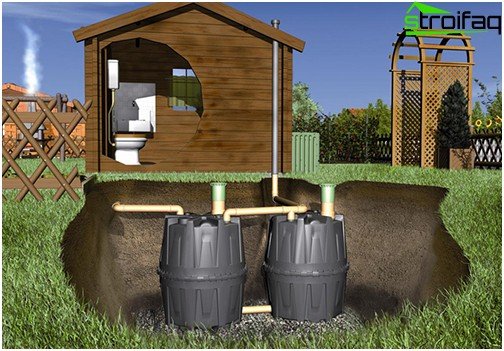
Ideally, the outdoor sewage system should be thought out at the initial stage of construction. It is necessary to lay a segment of asbestos-cement pipe in the base of the house for the outlet of the sewer pipe. After the pipe is brought into the house, it is necessary to attach a 90 degree elbow, a crosspiece, a revision and a vacuum valve to it, which is needed so that the siphons do not overflow.
After the device of the internal water supply, it should be checked: pour water with a maximum pressure through the funnel and see if the pipe connections passed this test, is there a leak? Found flaws – correct. Now you can do the finishing work – filling the technological hole with foam, warming and filling.
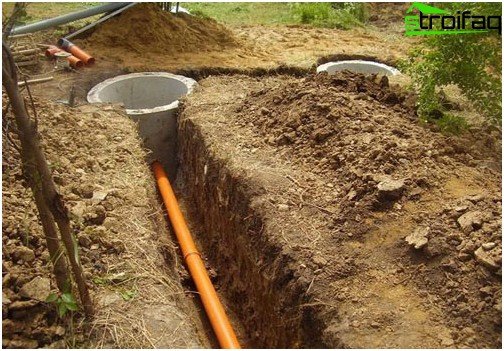
External sewage networks: the result of work
It is important! Within two years from the start of operation, the external sewage system will require pumping once every two years.
In buildings with more than two floors, it is necessary to provide a ventilation drain in the form of a fen pipe leading to the roof. Also, external sewage involves the use of an air valve, which reduces the complexity of installation by 2 times. Remember to leave access for future service..
Now that the work on arranging the sewage system is completed, you can be sure that the rest of the city will be filled with exclusively positive emotions. A well-constructed outdoor sewage system is the key to your peace of mind and a carefree pastime.



